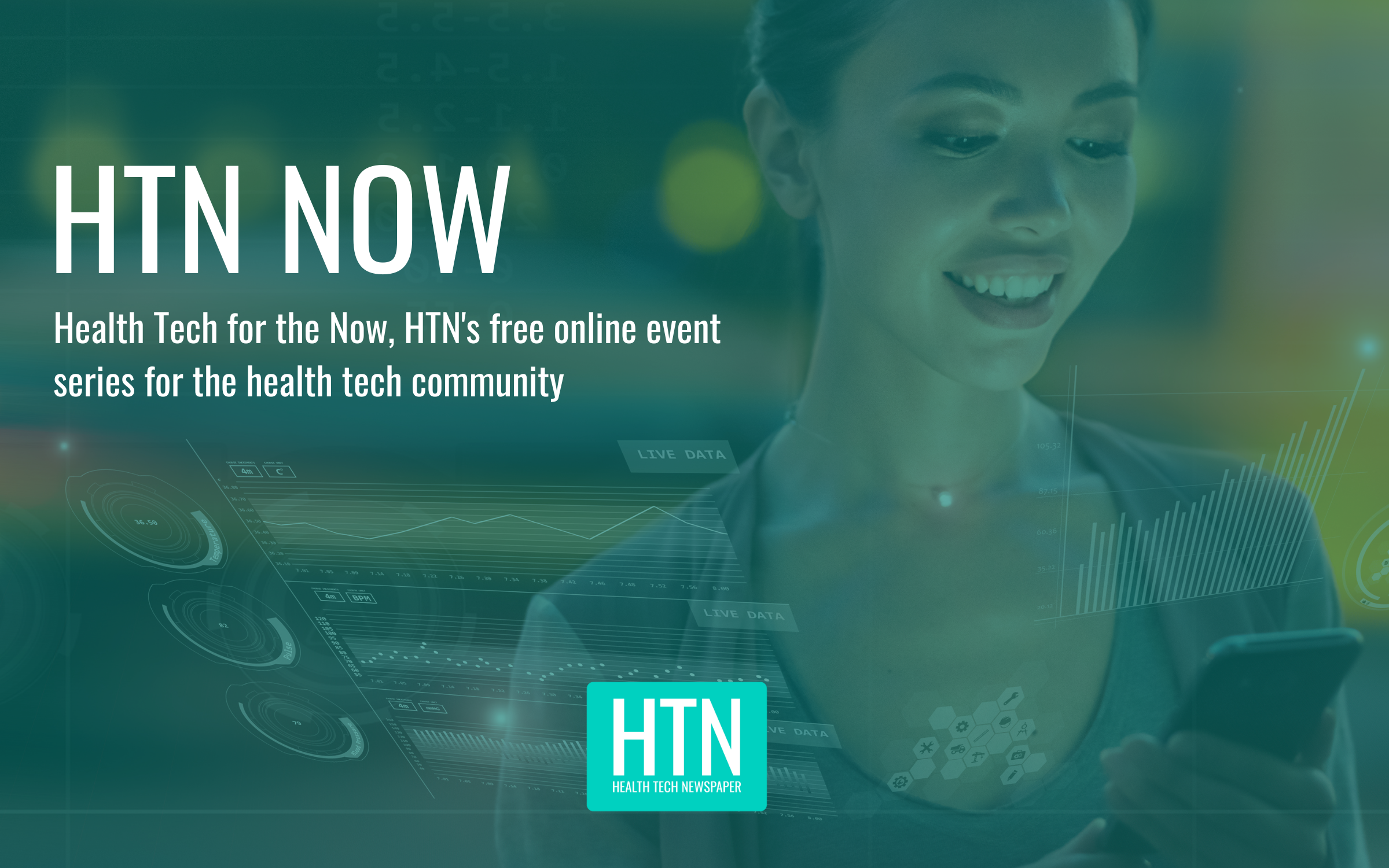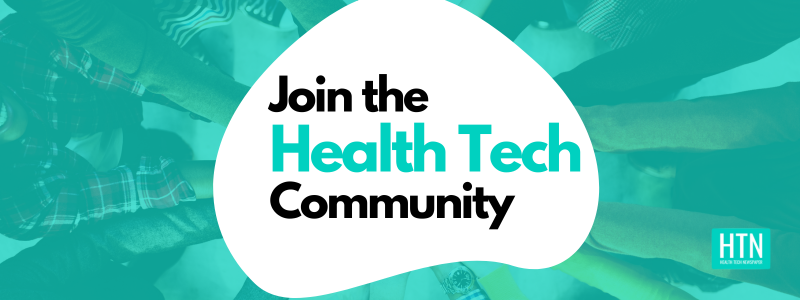To introduce our April edition of HTN Now, The Royal Free London NHS Foundation Trust focussed on sharing key learnings and experiences gained from the development of digital programmes, apps and systems at the trust.
For this webcast, we were joined by David Norton, Senior Innovation Consultant, Royal Free London, who provided insight into different digital viewpoints, bringing design thinking to digital delivery, and lessons learned at the trust so far.
To introduce the session and provide some background context on the varied nature of digital viewpoints, David said: “What you see and what you hear depend a great deal on where you are standing – this is very true – and I think in a lot of organisations when they think about digital, they tend to see it as one thing: digital transformation or improvements. But digital has got so many facets to it in terms of financing, in terms of risk. So, it’s really important to sit back and say, ‘how do we see digital from a particular perspective?”
David then discussed the notion of differing digital perspectives in relation to the key ‘capabilities’ of an organisation, as well as how digital can affect these capabilities. David commented: “A capability is something an organisation does that really makes an organisation what it is. Products and services change, but your core capabilities tend to stay the same for many, many years – and that’s important because capability models, if you look at Enterprise Architecture, allow you to ask questions such as how will digital impact this capability?
“So, when we look at capabilities, we can look at it from different perspectives. We can look at capabilities from technology, we can look at capabilities from core healthcare, we can look at capabilities from delivery, but what you can do is you can look at those viewpoints and triangulate on them to,” he continued, “get insight at how delivery of those capabilities, from those different viewpoints, affects the trust.”
Taking a closer look at these varied perspectives, David zoomed in on the ‘healthcare capability viewpoint’ model and how it enables healthcare professionals to focus on elements of care, such as integrated healthcare, healthcare core and enterprise services. These aspects, David said, can then be broken down further to ask fundamental questions like, “how does this capability affect the trust? Does it align with key capabilities in the trust organisation?”
Providing a word of warning for the innovators of tomorrow attempting to develop a system fit for purpose, David said: “We need to think about capabilities having an innovation strategy. If you want to think in [terms of] care paths, it’s the same thing: ‘what is the innovation strategy for that particular care path?’ and that is the really important question to ask because sadly, in many organisations, we don’t ask that question and we end up innovating on the wrong care path – in the wrong capability.
“So, if I am going to deliver a new digital system,” David explained, “how is it really going to improve that capability? How is it going to improve that particular care path?”
Moving away from healthcare capability and onto the technology viewpoint, David shared some of the major focuses at Royal Free London, which included digital work such as big data, robotic process automation and artificial intelligence. On the development of human machine interfaces at the trust, David said: “So, we’re doing a lot around VR and AI, we’ve got some very interesting topics there in terms of pain management. We’re looking at using the technology to help our staff in terms of relaxation and to learn new skills.”
However, David warned, many new technologies, apps and digital systems brought into existence are in danger of remaining on a ‘hype cycle’.
“Lots of technologies are talked about, but quite often are not being used or people are starting to find the use of the technology is much, much harder than expected. Pretty much every technology goes through this hype cycle – people talk about it, there is research undertaken on that technology, people play about with it, it becomes hyped up, and overtime it becomes mainstream,” David explained.
Later in the session, David shifted the topic of the discussion towards the operational and delivery viewpoint, speaking of the functions required of organisations to deliver ‘digital and innovation’.
Starting with ‘idea generation’, David stated: “It’s no good having lots of resources and lots of hype if you don’t have ideas. You have to start generating ideas across your origination. One thing about having digital transformation and having innovation is I am not a great fan of ‘centre of excellence’. So, when we start talking about ‘it’s a centre of excellence’, I am worried it becomes an ivory tower. We want everyone to be thinking about ideas and generating them.”
Explaining some of the most significant factors which contribute to successful leadership within innovation, David discussed innovation strategy and communication, where he said: “People need to know you’re doing this. People need to know why you’re doing this and what you’re trying to achieve. Digital is massively overused word, so be really careful how you communicate digital transformations.”
Expanding more on the all-important factors in achieving innovation amongst teams, David spoke of recognising psychological safety and risk perception and creating an environment where staff can freely share relevant ideas, stating: “If you put your hand up and say, ‘I have an idea’ to have management say we don’t have time for this, it is not your place to come up with ideas, we have a team of innovators who do that,” he continued, “you’re stifling innovation. Nor do you want your innovation team going round saying it’s our job to innovate.”
Shifting the focus of the conversation, David moved on to discuss the second core theme of the webinar: bringing design thinking to digital delivery. Here, David introduced the ‘innovation double diamond’ approach to help illuminate the thinking process by which innovators create digital systems. David said: “The first part of the diamond is divergent thinking; you open your mind, it’s that creative side. What we’re trying to do is use that to understand the problem space.
“The next part is convergent. So, you’ve used your creative mind to chat with the customers, to observe and you’re now converging on what the problem is. And once you’ve done that you’re back into convergent again because now you have the requirements and understand the problem,” David explained, “you can use that divergent thinking to ask yourself ‘what can we do and how could we solve this?’ And finally, convergent again. Picking one or two options and coalescing.”
Placing this approach within the context of the Royal Free London Foundation Trust, David spoke of the role empathy plays within design thinking, where he said: “A lot of individuals when they say, ‘I have empathy’ mean ‘I have cognitive understanding,’ not true empathy. Actually, empathy isn’t enough, you need compassion. Empathy is ‘I understand, I feel your pain,’ but compassion is ‘I’m motivated to do something about it.’ So, empathy without compassion can lead to feeling without action, but compassion without empathy can lead to feeling without understanding.”
Exploring the contributing factors of the design thinking process further, David spoke about the notion of ideation and “going wide” in terms of concepts and outcomes, saying ‘role play is one of my favourite ones, where you actually role play from the patient’s or staff’s perspective. Starburst is [also] a lovely exercise, where you use the ‘what, where, why and how,’ but rather than try to find out what patients or staff were doing, you find out what could they do.”
Moving onto the final section of the session, David provided a brief overview of some of the valuable lessons learned at the trust within their digital journey, starting with managing innovation as a pipeline. “What we have here at the Royal Free is a digital innovation steering group, and we manage innovation in four gateways. Gateway one is ‘I have an idea, come and talk to me about an idea.’ And that is a lovely stage because increasingly we’re getting nurses, clinicians, and even patients saying hey, I have this idea.”
Later, David weighed in on the platform versus product debate, arguing that innovators should aim for the former rather than a single-use product that performs a single function well, stating: “a platform has relationships with your database and your key backend systems and has the features you can build on, so a platform grows. A platform allows other people to build things on your platform.”
To conclude the webinar and give a thoughtful message for the future, David said: “You’ve got to focus on collaborating on particular issues, reaching out to academic partners, and importantly reaching out of your ecosystem because you don’t want to build an echo chamber. Extend your ecosystem to other organisations, such as start-ups.”
You can watch the full session below:




